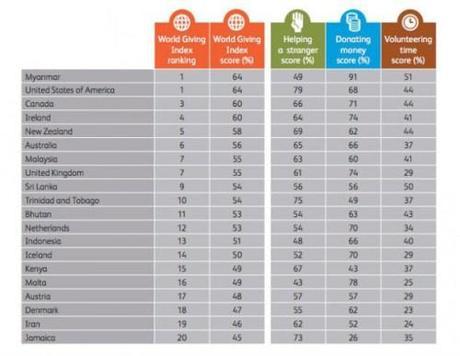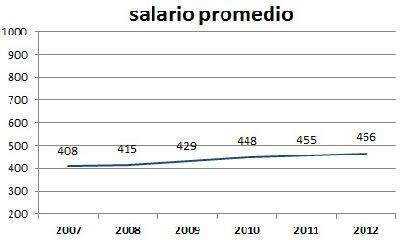(While I am nowhere near as accomplished as this professor in policy and international relations, I do understand that a Marxist-Leninist state is not beneficial for anyone – except the dictators. I offer my opinions after each point.)

The author and professor Richard Feinberg
Huffington Post: Now that President Barack Obama is normalizing diplomatic relations with Cuba, the U.S. government will try to teach Cuba about market economics and political pluralism. Certainly Cuba faces many challenges: low wages and low labor productivity, severe shortages of basic consumer products, and repressive one-party politics. We can usefully promote free enterprise and individual initiative, marketplace incentives and risk management, freedom of expression and habeas corpus, government transparency and popular accountability.
But we should also stop a minute and recognize that we have much to learn from Cuba, too. Here are 10 takeaways from the Cuban experience:
1. International solidarity. Tens of thousands of Cuban medical personnel work around the world, from combating Ebola in West Africa to providing primary health care in poor barrios in Venezuela. Sure, some of these doctors are relatively well paid by their hosts, and taxes on their incomes benefit the Cuban state. But Cuban society as a whole is properly proud of their nation’s contributions to alleviating human suffering around the world. Americans wildly overestimate the magnitude of our own foreign assistance, and too often resent the expenditures. Cuba’s global generosity shows the way.

Which country is missing from this 2014 list? Source: Charities Aid Foundation of America.
(American taxpayers offer a massive amount of foreign assistance – to the tune of $50.6 BILLION in 2013. This includes providing humanitarian assistance [basic foodstuff, vitamins and personal hygiene supplies] to political prisoners and their families in Cuba. Americans donate to private charity organizations in record amounts to help countries and people around the world. For example: Task Force for Global Health, ChildFund International, Conservation International Fund, The Hunger Project, and Catholic Relief Services. Cuba’s generosity? Since the establishment of the Revolutionary Government of Cuba in 1959, Cuba has sent more than 52,000 medical workers abroad to work in needy countries. There are currently about 20,000 Cuban doctors working in 68 countries across three continents. Cuba is leading the way?)
2. Professional diplomacy. Cuba’s diplomats are among the best in the world: well trained, predictably professional and utterly reliable. The US State Department has many exceptional diplomats, but too many of our international representatives are political appointees whose main qualifications are campaign contributions or political loyalty. In a competitive and complex world, we can ill afford such frivolities. (See picture and links below.)

Well-trained, predictably professional and utterly reliable – Fidel Castro and his firing squads.
3. Equitable distribution of income. In Cuban firms, senior managers earn only two to three times the take-home pay of their workers — in sharp contrast to a multiple of hundreds in U.S. business. Cuba went too far in leveling wealth, naively eliminating the monetary incentives necessary to encourage labor productivity. But there is an emerging consensus in the US that we have gone way too far in sanctioning gaping extremes between rich and poor.

(Every liberal’s utopia- income equality. In reality, Cuba’s equitable distribution of income state run enterprises means typical wages range from 400 non-convertible Cuban pesos a month, for a factory worker, to 700 per month for a doctor, or a range of around 17-30 U.S. dollars per month.)
4. Racial integration. Cubans are not blind to skin tones. On the contrary, Cuban speech is peppered with references to “rubios,” “mulattos,” “negros.” But there is a degree of integration — in social life, housing, workplace — that remains elusive in the United States. One causal factor: in Cuba, decent universal education levels the playing field.

(In this statement, the professor makes a sly implication that U.S. citizens are racist because we haven’t “integrated”. Guessed he missed the news and history about the elections of Obama, Revels, Chisholm, and many other minorities. Perhaps he also missed the integration of killing whites in rap music. And I guess the professor missed which country spends more than any other developed nation on its students’ education each year [which as a share of its economy, spent more than the average country]. In 2010, this country spent 7.3 percent of its gross domestic product on education, compared with the 6.3 percent average of other countries in that organization of the world’s most developed countries. I’d say that is decent spending.)
5. Community caring. Cuban communities are well organized to provide their residents with sports teams, primary health care, sex education, crime prevention and disaster preparedness (first responders, if you will). Yes, some of these units also channel political surveillance for the regime. Nevertheless, such grassroots committees — also found in many American neighborhoods — provide vital public goods, at low expense, for average citizens. (I have no comment here: You know our communities are better – unless you live in Chicago.)

Looks like a caring Cuban community.
6. Work-life balance. Cubans work hard — but they also devote plenty of time and energy to family and friends. Sundays are sacred family time, and beach homes are commonplace. Even during the workweek, in late afternoons Havana streets are populated with friendly domino games, and matinee dance halls cater to teenagers.

A Cuban beach home with an environmentally friendly dryer!
(Oh, that sounds so idyllic! With the US economy the way it is and long-term unemployment, I don’t know many folks who can afford a beach home.)
7. Sensuality and happiness. Chalk it up to their Caribbean roots, the tropical climate, or the Cuban revolution’s repression of the Catholic Church — but there’s a reason that Cuba is famous for its uninhibited exultation of the human form.

Uninhibited exultation of the human form in the streets of Cuba San Francisco.
(Guess the professor didn’t know that here in the US nudity is now a “civil right“. Americans do celebrate the naked human form (as long as you sit on a towel)! The professor must have missed these events: Dating Naked, public sex in Pennsylvania, Free the Nipple, textbooks for 9th graders featuring sex toys, oral sex & bondage, Beyoncé’s Grammy performance, the Fremont Solstice Parade, the Naked Bike Ride in Portland, the Folsom Street Fair, and of course, the Gay Pride parades. Just a sampling of the exultation of the human form that exists here in America. With all of this exultation, I’m guessing Cuba may be just a tad envious.)
8. Appreciating the arts. The sheer number of Cuban professionals in the performing and plastic arts — dance, music, painting, sculpture, film — is utterly astounding. And as tourists immediately remark, the quality is awesome! This beautiful depth of cultural production is made possible by one simple reality: society subsidizes artists’ salaries and performances. Every Cuban girl, no matter how poor, takes years of nearly free ballet lessons (as do many Cuban boys). The take-away: placing culture and the arts at the disposable of the populace requires public largesse.

Bet you haven’t seen this in Cuba (it was close though, in Miami)!
(Even though we have a national debt of over $18,000,000,000,000, the National Endowment for the Arts received a budget of $146.02 million per the 2014 Omnibus Appropriations bill and the National Endowment for the Humanities received $167.5 million in 2010.)

10. National pride. One characteristic that Cubans and Americans share: a fervent nationalism, a strongly held belief that their national experience is exceptional — such that they have little to learn from other societies. In this conceit, both are wrong: of course every nation is unique, but we are all imbedded in a single global network. We can all draw on each other’s experiences, to our mutual benefit.
I’m going to stop a minute and recognize that at least I know I’m free!
DCG

